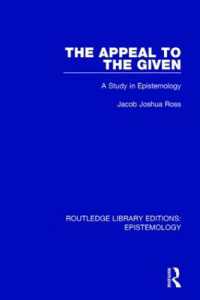Full Description
Social scientists who study religion generally believe that social networks play a central role in religious life. However, most studies draw on measures that are relatively poor proxies for capturing the effects of social networks. This book illustrates how researchers can draw on formal social network analysis methods to explore the interplay of networks and religion. The book's introductory chapters provide overviews of the social scientific study of religion and social network analysis. The remaining chapters explore a variety of topics current in the social scientific study of religion, as well as introducing a variety of social network theories and methods, such as balance theory, ego-network analysis, exponential random graph models, and stochastic actor-oriented models. By embedding social network analysis within a social scientific study of religion framework, Networks and Religion offers an array of approaches for studying the role that social networks play in religious belief and practice.
Contents
Part I. Introduction: 1. The surprising (at least to some) persistence of religion; 2. Social network analysis: a brief introduction; Part II. Ties that Bind: 3. Recruitment and conversion; 4. Commitment and conformity; Part III. Ties that Loose: 5. Diffusion and innovation; 6. Politics and community; Part IV. Ties that Build-Up: 7. Networks and tradition; 8. Health and happiness; Part V. Ties that Tear Down: 9. Conflict and cohesion; 10. Radicalization and violence; Part VI. Conclusion: 11. Conclusion; Appendices; References; Index.







